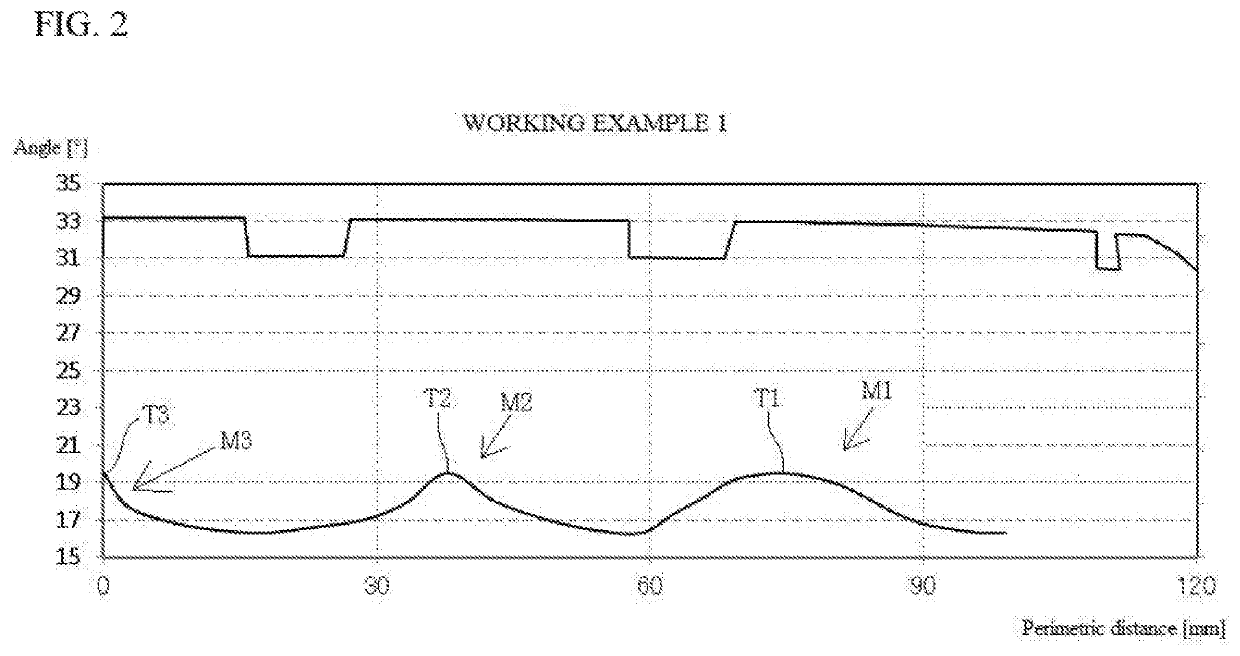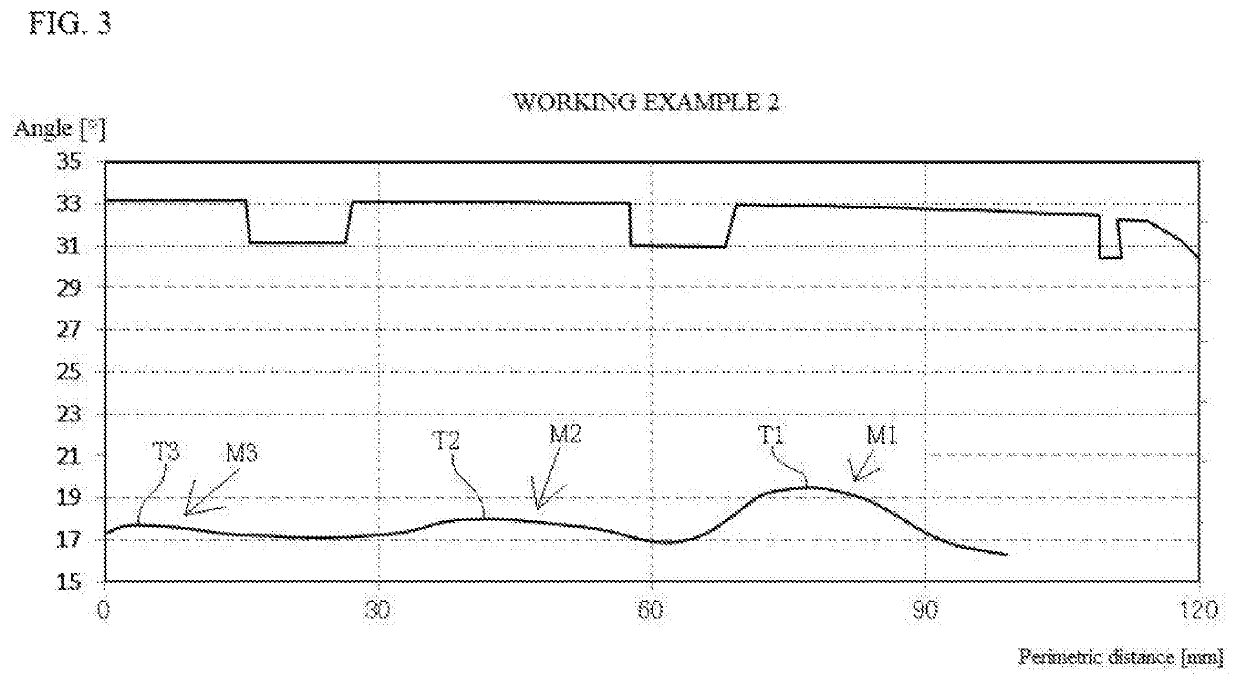Pneumatic tire
a technology of pneumatic tires and pneumatic cylinders, applied in the field of pneumatic tires, can solve problems such as inability to achieve the desired effect, and achieve the effect of suppressing the radial increase in dimensions and improving the resistance to uneven wear
- Summary
- Abstract
- Description
- Claims
- Application Information
AI Technical Summary
Benefits of technology
Problems solved by technology
Method used
Image
Examples
working examples
[0049]To illustrate the constitution and effect of the present disclosure in specific terms, evaluation was carried out as follows with respect to the following working examples.
[0050](1) Radial Increase in Dimensions During Driving
[0051]Under conditions such that tire size was 295 / 75R22.5, rim size was 22.5×8.25, and air pressure was 760 kPa, inside diameter was measured for three situations—these being the tire as mounted on its rim but before being fully inflated, the tire as fully inflated but before being placed in service, and the tire as fully inflated following increase in dimensions during driving—and the amount of change in the inner surface between the tire as mounted on its rim but before being fully inflated and the tire as fully inflated following increase in dimensions during driving was expressed in terms of an index. Results are shown as indexed relative to a value of 100 for Comparative Example 1, the smaller the index the less the increase in radial dimensions dur...
working example 1
[0054]Angle of inclination of cords C3 at third belt ply 83 was made to be as shown in FIG. 2. Second belt ply 82 was flipped relative to third belt ply 83. This was made to be such that angle θ1 of inclination at tire equator CL>angle θ2 of inclination at belt end 83a. This was made to be such that θ1=19.5° and θ2=16.3°. A first mounded region M1 in which angle varied and which corresponded to shoulder rib 32 was provided; a second mounded region M2 in which angle varied and which corresponded to mediate rib 33 was provided; and a third mounded region M3 in which angle varied and which corresponded to center rib 34 was provided. Angles θ of inclination at peaks T1, T2, and T3 at the respective mounded regions M1, M2, and M3 in which angle varied were all the same, being 19.5°.
working example 2
[0055]Angle of inclination of cords C3 at third belt ply 83 was made to be as shown in FIG. 3. This was made to be such that angle θ1 of inclination at tire equator CL>angle θ2 of inclination at belt end 83a, this being made such that θ1=17.3° and θ2=16.3°. Angles θ of inclination at peaks T1, T2, and T3 of first mounded region M1 in which angle varied, second mounded region M2 in which angle varied, and third mounded region M3 in which angle varied increased in magnitude as one proceeds from a location toward the tire equator to a location toward the exterior in the tire width direction. Angle θ of inclination at peak T3 of third mounded region M3 in which angle varied was 17.7°, angle θ of inclination at peak T2 of second mounded region M2 in which angle varied was 18°, and angle θ of inclination at peak T1 of first mounded region M1 in which angle varied was 19.5°. In other respects, it was similar to Working Example 1.
PUM
| Property | Measurement | Unit |
|---|---|---|
| angle of inclination | aaaaa | aaaaa |
| angles | aaaaa | aaaaa |
| groove angle | aaaaa | aaaaa |
Abstract
Description
Claims
Application Information
 Login to View More
Login to View More - R&D
- Intellectual Property
- Life Sciences
- Materials
- Tech Scout
- Unparalleled Data Quality
- Higher Quality Content
- 60% Fewer Hallucinations
Browse by: Latest US Patents, China's latest patents, Technical Efficacy Thesaurus, Application Domain, Technology Topic, Popular Technical Reports.
© 2025 PatSnap. All rights reserved.Legal|Privacy policy|Modern Slavery Act Transparency Statement|Sitemap|About US| Contact US: help@patsnap.com



